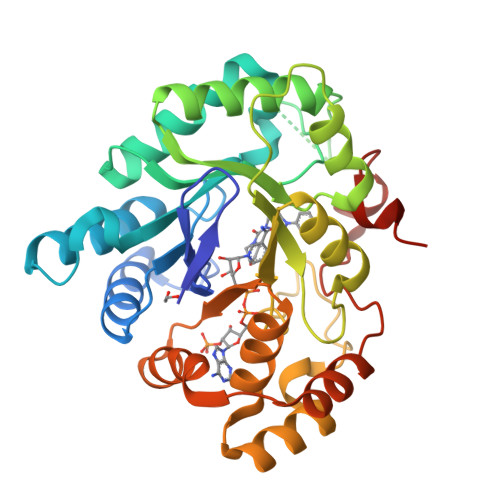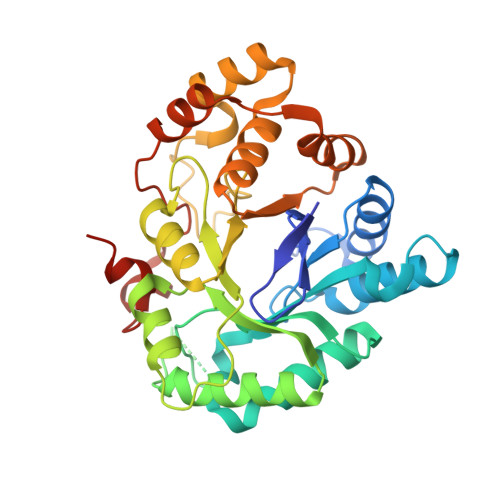Morpholylureas are a new class of potent and selective inhibitors of the type 5 17-beta-hydroxysteroid dehydrogenase (AKR1C3).
Flanagan, J.U., Atwell, G.J., Heinrich, D.M., Brooke, D.G., Silva, S., Rigoreau, L.J., Trivier, E., Turnbull, A.P., Raynham, T., Jamieson, S.M., Denny, W.A.(2014) Bioorg Med Chem 22: 967-977
- PubMed: 24411201
- DOI: https://doi.org/10.1016/j.bmc.2013.12.050
- Primary Citation of Related Structures:
4HMN - PubMed Abstract:
Inhibitors of the aldo-keto reductase enzyme AKR1C3 are of interest as potential drugs for leukemia and hormone-related cancers. A series of non-carboxylate morpholino(phenylpiperazin-1-yl)methanones were prepared by palladium-catalysed coupling of substituted phenyl or pyridyl bromides with the known morpholino(piperazin-1-yl)methanone, and shown to be potent (IC50∼100nM) and very isoform-selective inhibitors of AKR1C3. Lipophilic electron-withdrawing substituents on the phenyl ring were positive for activity, as was an H-bond acceptor on the other terminal ring, and the ketone moiety (as a urea) was essential. These structure-activity relationships are consistent with an X-ray structure of a representative compound bound in the AKR1C3 active site, which showed H-bonding between the carbonyl oxygen of the drug and Tyr55 and His117 in the 'oxyanion hole' of the enzyme, with the piperazine bridging unit providing the correct twist to allow the terminal benzene ring to occupy the lipophilic pocket and align with Phe311.
Organizational Affiliation:
Auckland Cancer Society Research Centre, The University of Auckland, Private Bag 92019, Auckland 1142, New Zealand; Maurice Wilkins Centre for Molecular Biodiscovery, The University of Auckland, Private Bag 92019, Auckland 1142, New Zealand.





















